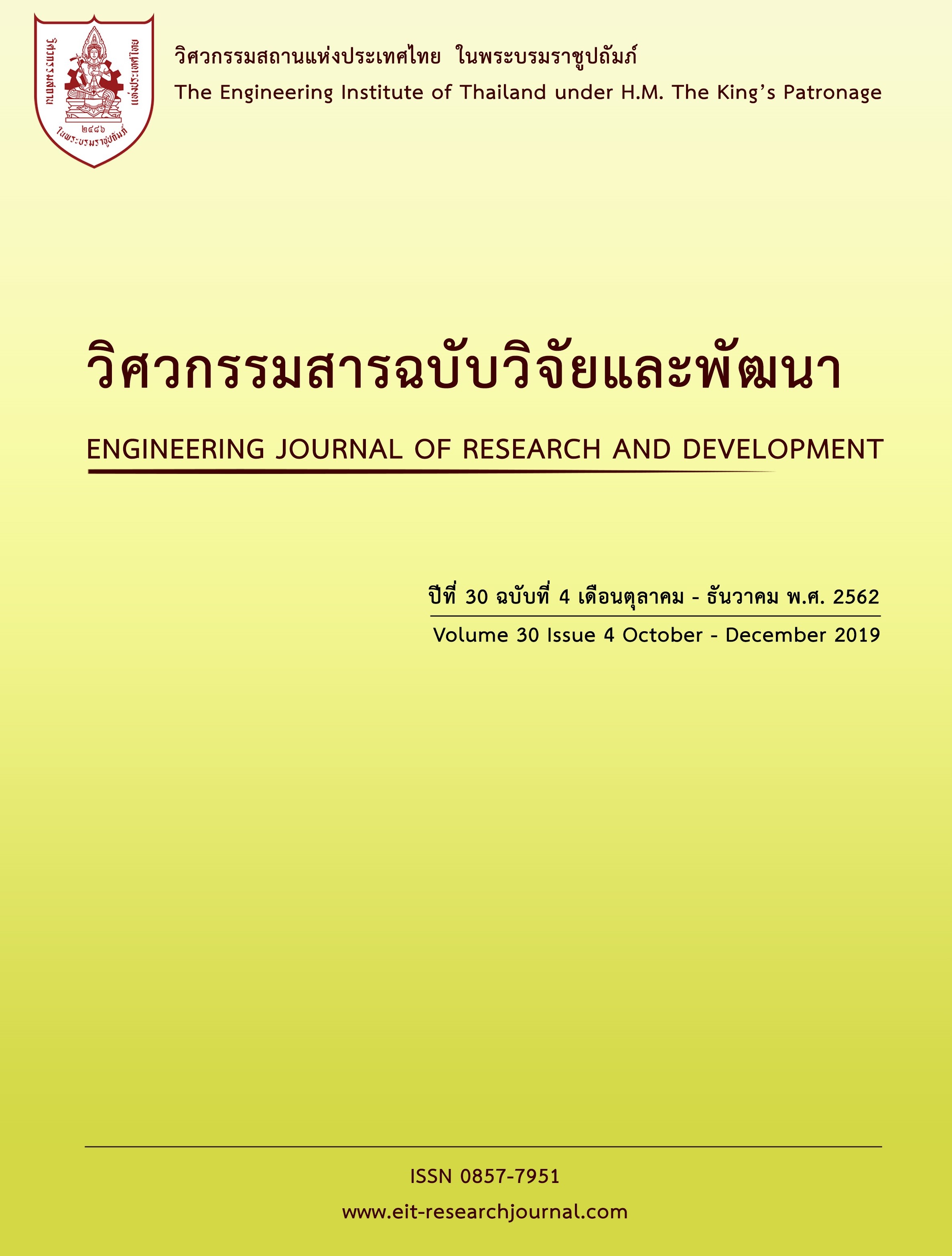PRELIMINARY ASSESSMENT OF SEAWATER INTRUSION ON PHUKET ISLAND USING GROUNDWATER DATA ANALYSIS AND GEOGRAPHIC INFORMATION SYSTEM (GIS) TECHNIQUES
Main Article Content
Abstract
Seawater intrusion can gradually cause a severe problem by contaminating freshwater aquifers and causing a lack of fresh water. The main purpose of this study was to assess the seawater intrusion problem in the coastal area of Phuket. To map the seawater intrusion, an analysis of existing groundwater chemistry data (2003-2016), obtained from groundwater producing wells and monitoring wells, was carried out. Chloride (Cl) concentration and Total Dissolved Solids (TDS) were the two main indicators of seawater intrusion. The average Cl concentration and TDS are highly correlated in a cross-plot in 8 sub-districts (Chalong, Rawai, Karon, Kamala, Mai Khao, Choeng Thale, Sisunthon and Thep Krasattri) of Phuket, and the risk areas with seawater intrusion problem were identified by these levels exceeding threshold (600 and 1,500 mg.L-1 for Cl concentration and TDS, respectively). A map of Phuket seawater intrusion was created by GIS techniques, by overlaying the based maps for Cl, TDS, groundwater extraction, and transmissivity. The map indicates that the coastal area in the northern part (Mai-Khao) have serious seawater intrusion, while the coastal areas of Kamala, Rawai, and Chalong, close to the middle and the southern part have only moderate seawater intrusion.
Article Details
The published articles are copyright of the Engineering Journal of Research and Development, The Engineering Institute of Thailand Under H.M. The King's Patronage (EIT).


